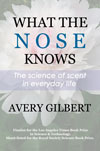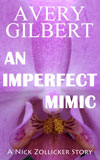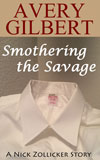 The Smoking Gun
The Smoking Gun reports that a twelve-year old boy was arrested for farting in school. If ever there was a case where smell and society collide, this is it. Naturally, I began to sniff around a bit.
On November 4th, teacher D.C. Carden at the Spectrum Jr./Sr. High School in Stuart, Florida wrote the kid up after he “continually disrupted his classroom environment by breaking wind and shutting off several computers.” Warren F. Pettway of the Martin County Sheriff Office questioned the little stinker at the scene, then arrested him on a charge of “Disruption of a School Function.” Sounds like a pretty extreme response to cutting the cheese.
But after Googling a little beyond the headlines, I’m inclined to give the teacher and officer Pettway some slack. The
Spectrum School houses the Martin County School District’s “alternative education” program for grades 9 through 12. Alternative in this case meaning “alternative to expulsion.” The school
made news last month when a 15-year old student was pepper-sprayed by a sheriff’s officer for being loudly disruptive during a lunchroom detention, refusing to calm down after being removed, and then physically threatening the officer. The Spectrum School doesn’t sound like a tea party.
Still, the story forces us to rethink the social implications of farting. Sociologists like Erving Goffman treat it as a failure of our “performance of self.” In other words, farting is a social error like yawning while the boss is talking, or leaving the men’s room with an unzipped fly: one has failed to convincingly act out the role of attentive subordinate or well-groomed professional. To Goffman, farting belongs to the subspecies of performance failure known as self-contamination. The bad impression of self-contamination can be repaired by an apology or other form of excuse making: “Oops, silly me—I spilled soup on my shirt.”
But how well does Goffman’s theory apply to the venting of intestinal gas? Not very well, I believe. First, there is no socially acceptable way to apologize for breaking wind. “Pardon me for farting” is not a phrase found in etiquette books—and in the absence of social norms creative apology making can go dreadfully wrong. For example, a guy who stank up a subway car on New York’s R line
apologized to fellow subway passengers via the “Missed Connections” section of Craigslist—a section usually used for romantic near-misses. Dude, talk about “eeeuuuww.”
Goffman’s theory also fails for a second reason: it assumes that all gas is passed reluctantly or by accident. It doesn’t account for the deliberate farter. Here’s a classic example, related by Holden Caulfield in
The Catcher in the Rye:
. . . then all of a sudden this guy sitting in the row in front of me,
Edgar Marsalla, laid this terrific fart. It was a very crude thing to
do, in chapel and all, but it was also quite amusing. Old Marsalla.
He damn near blew the roof off.
Farting for effect is time-honored adolescent tradition. Apology was probably the last thing on Edgar Marsalla’s mind. And this brings us back to the twelve-year old in Stuart, Florida. When does deliberate farting cross the line from low comedy to misdemeanor?
Two months ago in South Charleston, West Virginia,
police were booking Jose Antonio Cruz on a DUI charge. While being fingerprinted, the suspect “lifted his leg and passed gas loudly” on Patrolman T.E. Parsons. The cops promptly added a charge of battery to the criminal complaint against Cruz. At the request of the county prosecutor a judge later dropped the battery charge.
But imagine that the charge stuck and Cruz was sentenced to jail time. Do you know what they do to deliberate farters in prison? Brian Bruggeman of Hershey, Nebraska
found out the hard way. His repeated flatulence in the Lincoln County Jail caused his cellmate Jesse Dorris, of North Platte, to take exception. The two came to blows and Dorris was injured. Bruggeman is now charged with felony assault—he’s looking at five years if convicted.
It isn’t hard to see where all these cases are leading. No doubt the inventive minds of the American bar are already at work. At a minimum, deliberate farting is a private tort. If the noxious emission is on a grand enough scale it might constitute a public nuisance. Think of it—injunctions, monetary damages, even punitive damages. This could be the next frontier for mass tort litigation. The B&M Baked Beans company needs to review its product liability exposure immediately.
Deliberate farting implies reckless disregard for public health. New York City’s Mayor Bloomberg, who probably has never released an audible one, may institute a city-wide ban on indoor farting and prohibit restaurants from serving flatulegenic foods. There could be rulemaking at the federal level: if workers let loose on the assembly line, OSHA could declare an unsafe work environment and shut the plant down. Comment unfavorably on a coworker’s gassiness and you might find yourself charged with workplace harassment. And don’t forget the implications for global warming—expect the California Air Resources Board to monitor the VOC levels in rectal emissions on a household by household basis. Al Gore will urge you to reduce your carbon fartprint.
We’re doomed, I tell you, doomed.







